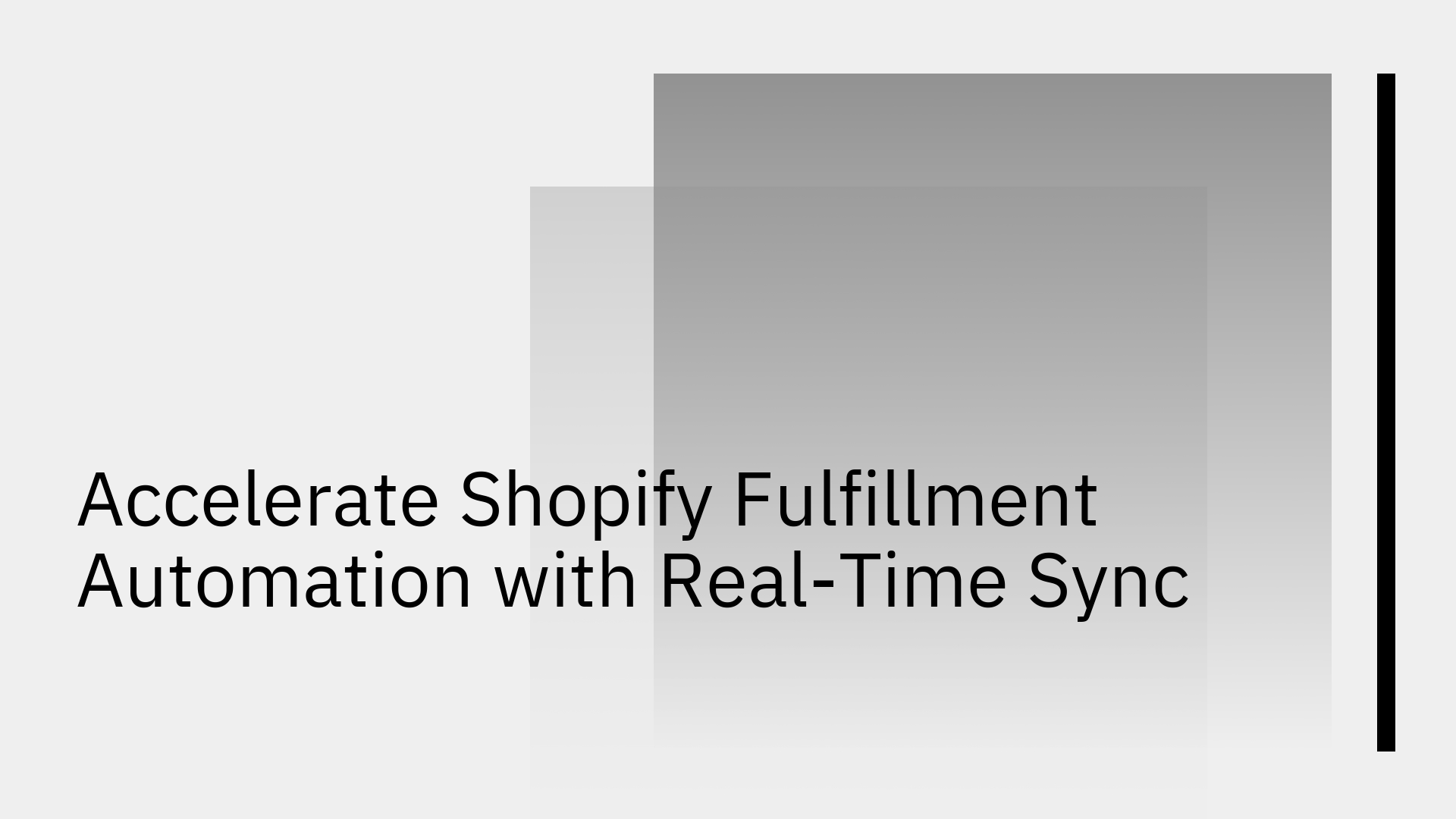
If you're running a growing Shopify business, you've likely felt the pressure. As orders pile up, manual fulfillment processes that once worked become slow, prone to errors, and unable to keep up with customer expectations. The clear solution is Shopify fulfillment automation. But to truly unlock efficiency and build a scalable operation, you need more than just basic connections you need the power of real-time, two-way data synchronization.
This article breaks down how to build a powerful, automated fulfillment system that eliminates manual work and keeps your customers happy.
When your fulfillment process can't keep pace, it creates a domino effect of problems that hurt your bottom line and your brand's reputation. These aren't small hiccups; they are significant operational issues that can stifle growth.
Shopify fulfillment automation is the use of technology to streamline the entire order journey, from the moment a customer clicks "buy" to the package arriving at their door. The goal is to create a hands-off, highly efficient process that connects all your separate systems—like your storefront, ERP, and warehouse so they work together as one.
An automated fulfillment workflow breaks down into these key stages:
Many "automation" tools rely on batch updates, meaning they sync data on a schedule—perhaps every hour or every 15 minutes. This isn't true automation; it's just scheduled manual work. Real-time synchronization is the game-changer, updating data across all systems in milliseconds.
The engine behind this is two-way sync, where data flows seamlessly in both directions. For example, a new order flows from Shopify to your ERP, and once shipped, the tracking information flows from the ERP back to Shopify. Stacksync offers a powerful platform for Shopify two-way sync integration and workflow automation, ensuring every system is always perfectly up-to-date.
Achieving true Shopify fulfillment automation doesn't require months of custom development. With Stacksync, you can build a reliable, real-time workflow in a fraction of the time.
First, connect all the tools your business relies on. Stacksync's no-code platform has over 200 pre-built connectors, so you can easily link Shopify to your ERP (like NetSuite), CRM, and warehouse systems. This allows e-commerce teams to unify their technology without writing a single line of code.
Next, tell your systems how to talk to each other. You can visually map fields between applications, like matching Shopify order details to the sales order fields in your ERP. Stacksync handles all the complex parts in the background—like API limits, data formatting, and error handling to ensure your Shopify and NetSuite integration is always running smoothly.
Use simple triggers to automate your processes. For example, you can set up rules like:
Order is created in Shopify, automatically create a Sales Order in NetSuite."Fulfillment record with a tracking number is created in your warehouse system, update the Order in Shopify and send a notification."Finally, turn on your sync and use Stacksync's dashboard to keep an eye on everything. You get a clear view of your integration health, allowing you to track performance and quickly resolve any issues to maintain perfect data integrity.
Implementing a real-time, automated fulfillment system delivers clear and powerful benefits that drive growth and improve your bottom line.
In today's competitive e-commerce world, fulfillment is more than just shipping boxes it's a core part of the customer experience. Slow, manual processes are no longer an option. Shopify fulfillment automation, powered by real-time data sync, has become a necessity for growth.
Platforms like Stacksync provide the essential technology to break down data silos, automate critical workflows, and build a resilient, scalable, and customer-focused operation.
Ready to see how it works? Schedule a demo with one of our experts today.